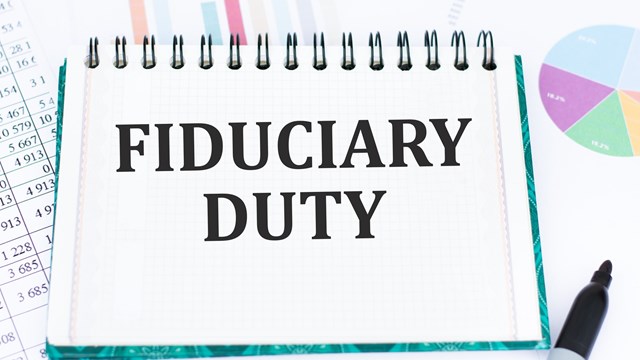Board meetings provide the time and space for co-op and condo leaders to establish and direct building operations. "Every board has its own distinct group personality," observes Howard Schechter, a partner in the Manhattan law firm of Schechter Brucker, PC, "and it’s important to fit the format of the meeting to the personality of the group." For example, some boards are very effective in the most informal of settings, and can meet in someone’s apartment and make decisions over coffee and cake. Others may need a more rigid structure, such as a meeting room within the building or at management’s offices, to stay focused. "The most successful boards are those in which the members put their personal feelings aside and treat each other with respect even if they disagree," says Schechter. To make sure your meetings are on the productive side of the coin, keeping them running smoothly and efficiently, it is important that the board follow certain guidelines.
Why Meet at All?
The first thing board members have to understand is why the board exists at all, advises Schechter. "It is the purpose of a board of directors or managers to set policy for their building, and to direct the professional management they have engaged to run the building, and that’s what they should be doing during their meetings."
Schechter’s advice is well taken in light of the fact that some board members mistakenly use board meeting time to air their own personal grievances or to talk about matters that are not relevant to the issues of the moment. By understanding and remembering the purpose of the board and why it has assembled, its members can assume the appropriate attitude to conduct business and get home at a reasonable hour.
"Most bylaws require a certain number of meetings annually, but there’s usually nothing that says they have to be monthly," explains Ron Gold, a partner with Wagner, Davis & Gold, PC, a Manhattan-based law firm. "But there are typically concerns that need the board’s regular attention, and properties that meet less than monthly usually have problems keeping control." According to most bylaws, boards that need to meet more than monthly can call special meetings on two days’ notice delivered to participants in person, by mail, or by telegram.
Just as important is to schedule meetings when it’s convenient for most, if not all, board members to attend. Since a quorum is required to vote, no board meeting can be truly effective unless the majority of members are present.
Where to Go?
Unless specifically stipulated in the bylaws, boards can meet anytime, anywhere. The most important factors are that a quorum of directors/managers, plus the management representative and other appropriate professionals, be present; that the space be available for the entire meeting; and that the environment be conducive to productivity.
"Meetings held in a business-like setting, either an office or around a table, tend to be more focused than if held in a more informal environment," offers Mark Moskowitz, president of The Argo Corporation, a residential management firm. "To help in this area, we offer our own offices to clients for meetings." Many management companies do likewise.
The opposite extreme is to hold board meetings in public places, like restaurants. These informal settings can be troublesome due to their attendant distractions, logistical restrictions, and time constraints. Space on the property’s premises, such as a meeting/board room, super’s office, or the home of a director or manager, may provide the best alternative. Resident board members, who usually comprise the majority of a board, may feel most comfortable on their own turf, and don’t have to worry about transportation home after the meeting. Ultimately, each board must determine when and where they are most productive.
Set an Agenda
Pre-planning is essential to smoothly-run, time-conscious meetings. It’s important for boards and management to work together to prepare agendas and informational packages well before the meeting, and provide them to directors and managers in a timely manner, so that the board has a chance to review them and can discuss them knowledgeably at the meeting. The aim is to make the most efficient use of your time together.
"The main problem with most board meetings is lack of focus," observes Schechter. "The most effective meetings are those where the chairperson works from an agenda, and moves the agenda forward without squelching discussion but without allowing digressions."
According to Ken Lovett, president of John B. Lovett & Associates, Ltd., a real estate management firm in College Point, New York, "Board members should be communicating with each other on a regular basis between board meetings in order to clarify issues and to discuss positions that will arise at the board meeting itself. The managing agent should communicate with the board president at least a week before the meeting to discuss the topics that will be brought up at the meeting and to set an agenda," he explains. "Then, the person chairing the meeting should be in control of the meeting and remind the other members that there is an agenda that is being followed. It is the president’s responsibility to keep the meeting on track."
Most bylaws don’t mention specifically how meetings should be run, says Gold. You don’t need rules of order if the simple rule of courtesy is followed. But many boards do try to go by the book. "Roberts Rules of Order" is the standard text used by most boards and management firms. Other boards are less structured in their approach. One board member says, "I like an informal meeting with an agenda," although she adds, "I do agree that discussions and meetings shouldn’t be open-ended."
In addition to the board and managing agent, appropriate professionals, such as legal counsel, accountants, engineers, etc., should also be invited when their input is necessary. Keep in mind that nobody appreciates a well-run meeting more than visiting professionals. "Some of us are out three or four nights in any particular week," says Myron Jacobs, a partner with the accounting firm Jacobs & Schwartz. "We like to see a well-organized meeting so that we can respond to questions and remain at the meeting only as long as our presence is required. After that, it’s a little unfair." It’s also important that the accountant or other professional be advised in advance of specific issues that are going to be raised, so their presentation can be that much more meaningful.
Regardless of what’s planned, the reading and approval of the minutes of each meeting should be the first standard item on every board meeting agenda. Reviewing the last meeting’s minutes helps to refresh the board regarding what transpired at the prior meeting and allows the opportunity to clarify what may have been misrepresented. In meetings where a guest such as a shareholder or visiting professional will be asked to participate, start the meeting a little earlier and make the guest the first order of business, even before the approval of the prior meeting’s minutes. This is considerate of the visitor, and will also allow the board time to digest and discuss the presentation after the guest has been excused.
Recording Meeting Minutes
Every corporation requires that the minutes of its board meetings be recorded and adopted in a timely manner. While most boards consider the recording and promulgation of minutes to be the secretary’s responsibility, many bylaws state that the secretary is responsible for causing the minutes to be taken. This means that anyone who is capable can produce the minutes; the secretary is responsible only for ensuring that the job is done. Make sure that whoever takes the minutes is responsible and reliable, keeping an accurate record of what transpires at the meetings. This is helpful as a reference for future meetings as well as future boards, and is also required in the bylaws of the corporate entity.
"Share your minutes with your property’s professionals, especially your attorney or accountant," Gold recommends. From a legal perspective, after we review the minutes we may find that certain things weren’t done in the right way, which might invalidate a motion.
The minutes are a principal way for everyone to find out what’s planned for the property’s immediate and long-range future. In a perfect world, the optimum board would consist of an attorney, an accountant, a structural/mechanical engineer, an architect, etc., and they would all know what needs to be done. But in reality, boards are formed of people with other responsibilities, and they need organization to make a board meeting run smoothly. The key is to get things done. That’s what everyone is at the meeting to do.
Adopt Productive Habits
In the end, a successful meeting is really dependent upon the people present. "Good meetings are a balancing act, and a strong president or chairperson is the key," says Schechter. Effective meetings are those in which the board establishes policy based on accurate and complete information, and are run by someone who permits the presentation of the necessary information and fosters open debate, but who knows when and how to move the agenda forward.
The ideal board meeting starts with every board member showing up on time and staying for the duration. To accommodate personal and professional time considerations, some boards set time limits and commit themselves to highly structured agendas. But when there are important issues to be decided, it’s unwise to curtail discussion and consideration. Basically, meetings should last as long as it takes to get the job done.
If a board member demonstrates a tendency to waste everyone else’s time and energy, the board has the right and the responsibility to ask that person to curtail such comments or even to require that he step down. Everyone on the board has been elected to serve in a responsible, fiduciary capacity, and no one should be allowed to sit on the board who will try to divert or disrupt that process.
Be mindful that board members who insist on shouldering every responsibility within the building tend to burn out and be ineffective. Boards that know how to delegate certain responsibilities will not only find themselves more productive, but will also be grooming the next generation of involved board members for their buildings. They’ll also help to move their meetings along.
Don’t wait until ten minutes before the meeting to prepare; take the necessary time before the meeting to review notes, management reports, and all other information that’s been given to you. Come prepared to participate in an informed discussion. It might be helpful if every member of the board has an assignment, and be prepared to discuss the status of that assignment. In some cases, each director is assigned a committee, and that director reports on the committee’s activities at every board meeting. Also, each director who has taken on a specific task has to report on the status of that task at the meeting, as well. Obviously, they have to be prepared.
"When board members keep in mind that the purpose of board meetings is to make decisions, set policy, and direct management," says Lovett, "they can welcome input from other shareholders or unit owners in the form of committee participation." The members of these committees should help the board prepare for its meetings by providing reports and recommendations in advance of the board meetings.
Finally, the most successful board meetings are chaired by a strong leader. Some board presidents are stronger than others, while there are other boards that prefer that the managing agent run the meeting. But regardless of who actually chairs the meeting, it is that person’s responsibility to keep the discussion focused, move the meeting forward and keep everyone on track.
Ms. Lent is a freelance writer living in Bloomfield Hills, Michigan.







Comments
Leave a Comment